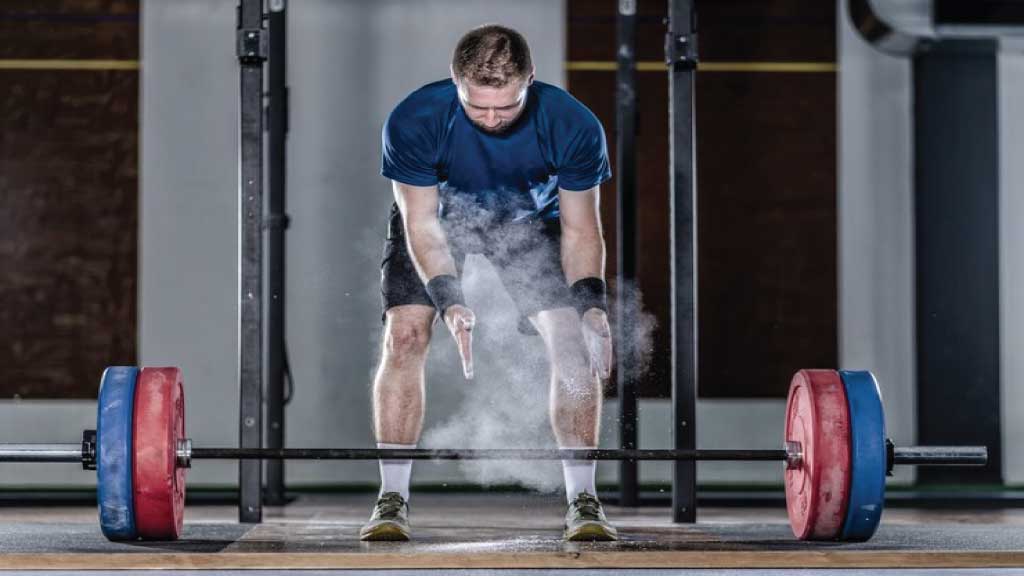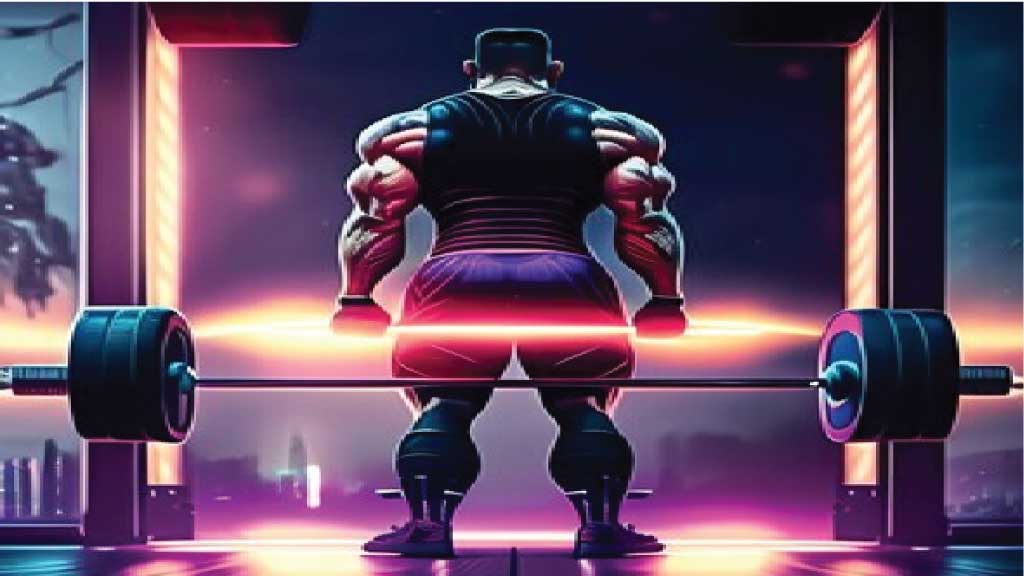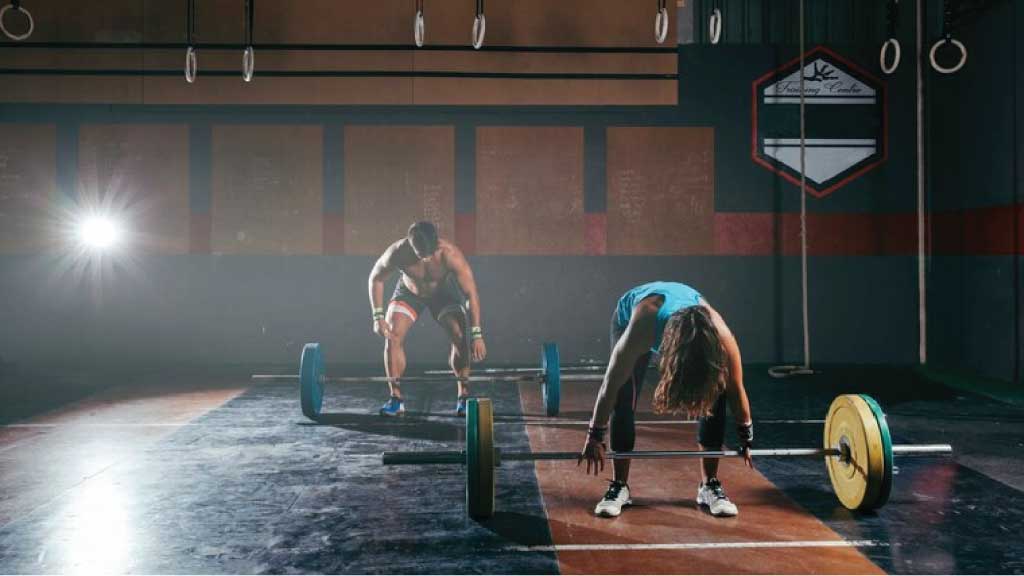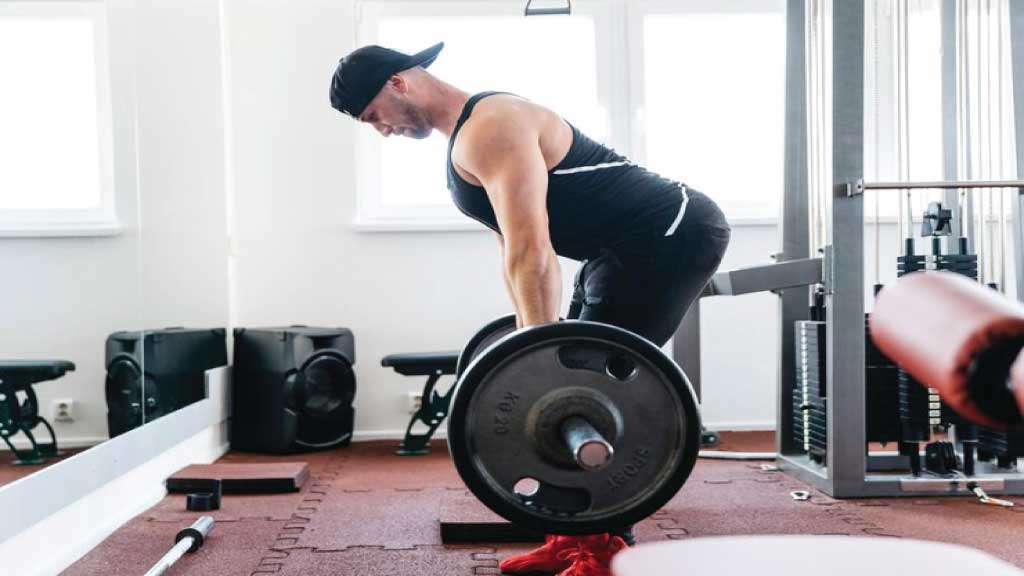Welcome to our comprehensive guide on Romanian Deadlifts. If you’re looking to enhance your lower body strength, improve your posterior chain development, and refine your lifting technique, then Romanian Deadlifts are an essential addition to your workout routine. In this article, we’ll delve deep into the nuances of Romanian Deadlifts, covering everything from proper form and execution to the benefits they offer.
What Are Romanian Deadlifts?
Romanian Deadlifts, often abbreviated as RDLs, are a cornerstone exercise in strength training, revered for their ability to sculpt and strengthen key muscle groups. Distinguished from conventional deadlifts by their distinct movement pattern, Romanian Deadlifts emphasize the eccentric phase of the lift, wherein the lifter lowers the barbell towards the ground while maintaining strict form and control. This controlled descent is pivotal in activating the hamstrings, glutes, and lower back muscles, stimulating muscle growth and fostering greater strength gains over time.
Unlike traditional deadlifts where the bar is lifted from a stationary position on the floor, Romanian Deadlifts commence from a standing position, requiring the lifter to hinge at the hips and maintain a slight bend in the knees throughout the movement. This nuanced approach not only enhances muscular engagement but also minimizes strain on the lower back, promoting safer lifting mechanics and reducing the risk of injury.
Moreover, Romanian Deadlifts offer a versatile training stimulus that can be tailored to suit individuals of all fitness levels and goals. Whether you’re a seasoned athlete looking to enhance performance or a novice lifter seeking to build foundational strength, incorporating Romanian Deadlifts into your workout routine can yield significant benefits.
From a biomechanical standpoint, Romanian Deadlifts are unparalleled in their ability to target the posterior chain muscles, including the hamstrings, glutes, and erector spinae. By honing in on these muscle groups, lifters can fortify weak areas, correct muscular imbalances, and unlock newfound levels of strength and stability.
Furthermore, the eccentric nature of Romanian Deadlifts not only maximizes muscle activation but also fosters greater muscle hypertrophy over time. This makes them an indispensable tool for bodybuilders and fitness enthusiasts alike, seeking to sculpt a well-rounded physique and achieve aesthetic goals.
In addition to their muscle-building benefits, Romanian Deadlifts serve as a potent tool for injury prevention and rehabilitation. By strengthening the muscles surrounding the hips and lower back, these lifts fortify the body’s natural support system, mitigating the risk of common lifting injuries such as strains and sprains.
Proper Form and Technique of Romanian Deadlifts

Mastering the proper form and technique is paramount when performing Romanian Deadlifts to ensure maximum effectiveness and minimize the risk of injury. Let’s delve into the intricacies of each step to execute this exercise with precision and control.
1- Starting Position:
To initiate the Romanian Deadlift correctly, assume the starting position with confidence and poise. Stand tall with your feet shoulder-width apart, ensuring a stable base for optimal balance and control. Orient your toes slightly outward to facilitate a natural hip hinge movement pattern.
Grasp the barbell firmly with an overhand grip, positioning your hands just outside your thighs. This grip configuration provides stability and control throughout the exercise, enabling you to maintain proper alignment and form.
2- Engage Core and Hinge at Hips:
Before commencing the movement, focus on engaging your core muscles to stabilize your spine and pelvis. Imagine bracing your abdominals as if preparing to withstand a gentle push. This core activation not only protects your lower back but also enhances overall lifting performance.
Now, initiate the movement by hinging at the hips, rather than bending at the waist. Keep your chest lifted and shoulders pulled back, maintaining a proud and upright posture throughout the exercise. Push your hips back while simultaneously allowing your knees to bend slightly, ensuring that the majority of the movement originates from the hip joints.
3- Lower the Barbell:
As you hinge at the hips, begin to lower the barbell towards the ground in a controlled manner. Keep the barbell close to your body throughout the descent, maintaining a straight and neutral spine. Visualize a straight line extending from your head to your tailbone, avoiding any excessive rounding or arching of the back.
Focus on actively lengthening your hamstrings as you lower the barbell, feeling a deep stretch in the muscle fibers. Descend until you reach a point where you experience tension in your hamstrings, signaling the maximal range of motion without compromising form.
4- Feel the Stretch:
At the bottom of the movement, pause momentarily to emphasize the stretch in your hamstrings. This stretch position not only enhances flexibility but also maximizes muscle activation and recruitment. However, be mindful not to descend too low, as this may lead to excessive rounding of the lower back.
5- Return to Starting Position:
With controlled precision, reverse the movement pattern to return to the starting position. Drive through your heels, actively engaging your hamstrings and glutes to lift the barbell back to the upright position. Focus on maintaining a strong and stable core throughout the ascent, avoiding any excessive sway or compensatory movements.
As you ascend, concentrate on squeezing your glutes at the top of the movement to achieve full hip extension. This peak contraction not only enhances muscular activation but also promotes symmetrical development of the gluteal muscles.
6- Repeat:
With the completion of each repetition, strive for consistency and fluidity of movement. Aim to perform the desired number of repetitions with proper form and control, focusing on quality over quantity. Monitor your breathing patterns, inhaling deeply during the descent and exhaling forcefully during the ascent to optimize intra-abdominal pressure and core stability.
By adhering to these fundamental principles of proper form and technique, you can unlock the full potential of Romanian Deadlifts as a transformative exercise for strength, muscle hypertrophy, and functional movement patterns.
Benefits of Romanian Deadlifts

Incorporating Romanian Deadlifts into your training regimen offers a plethora of benefits that extend far beyond mere muscle growth. Let’s delve deeper into the myriad advantages that this compound exercise brings to the table:
1. Enhanced Posterior Chain Development:
The primary target of Romanian Deadlifts lies in the posterior chain, comprising the hamstrings, glutes, and lower back muscles. By honing in on these muscle groups, Romanian Deadlifts foster balanced development, bolstering athletic performance, stability, and injury resilience. Strengthening the posterior chain not only enhances athletic prowess but also contributes to overall functional movement and daily activities.
2. Amplified Strength and Muscle Hypertrophy:
One of the hallmark features of Romanian Deadlifts is their capacity to facilitate substantial gains in both strength and muscle size. By subjecting the targeted muscle groups to heavy loads and controlled eccentric contractions, this exercise stimulates muscle hypertrophy, paving the way for greater strength gains and aesthetic improvements. Whether you’re striving to sculpt a powerful physique or enhance functional strength, Romanian Deadlifts are a tried-and-tested avenue for achieving your fitness goals.
3. Augmented Functional Strength:
The biomechanics of Romanian Deadlifts closely mirror real-life movement patterns, making them a quintessential exercise for enhancing functional strength. The hip hinge motion inherent in Romanian Deadlifts replicates common activities like lifting objects or bending over, thereby fortifying the muscles involved in these tasks. By honing functional strength through Romanian Deadlifts, individuals can perform daily activities with greater ease and efficiency, thereby enhancing overall quality of life.
4. Elevated Athletic Performance:
Athletes across various disciplines stand to benefit significantly from incorporating Romanian Deadlifts into their training routines. By fortifying the posterior chain, these lifts lay the foundation for improved athletic performance, particularly in activities that demand explosive power and speed. Whether you’re sprinting down the track or executing a vertical jump, the enhanced power, speed, and explosiveness derived from Romanian Deadlifts can give you the competitive edge you need to excel in your chosen sport.
5. Injury Prevention and Rehabilitation:
Proper execution of Romanian Deadlifts plays a pivotal role in injury prevention and rehabilitation, particularly in the realm of strength training and sports performance. By reinforcing optimal lifting mechanics and strengthening the stabilizing muscles around the hips and lower back, Romanian Deadlifts mitigate the risk of common lifting injuries such as strains and sprains. Moreover, for individuals recovering from injuries, Romanian Deadlifts serve as a valuable tool for rehabilitating weakened muscle groups and restoring functional movement patterns.
Romanian Deadlifts stand as a cornerstone exercise in any comprehensive strength training program, offering a multitude of benefits ranging from enhanced muscle development and functional strength to injury prevention and athletic performance. Whether you’re a seasoned lifter seeking to break through plateaus or a novice athlete looking to elevate your fitness journey, Romanian Deadlifts provide a versatile and effective means of achieving your goals.
Romanian Deadlift vs Deadlift: Unveiling the Key Differences

When it comes to strength training, two exercises often find themselves at the forefront of discussions: the Romanian deadlift (RDL) and the conventional deadlift. While both exercises target similar muscle groups and offer numerous benefits, they differ in execution, muscle emphasis, and overall impact on strength and muscle development. Let’s delve into the nuances of each exercise to understand the key differences between Romanian Deadlifts and Deadlifts.
1. Technique and Execution:
Romanian Deadlift (RDL):
The Romanian Deadlift is characterized by a hip-hinge movement pattern, wherein the lifter maintains a slight bend in the knees while pushing the hips back and lowering the barbell towards the ground. Unlike the conventional deadlift, the Romanian Deadlift starts from a standing position, and the barbell is lowered until the lifter feels a deep stretch in the hamstrings, typically stopping just below the knees. Throughout the movement, the back remains straight, and the emphasis is placed on engaging the posterior chain muscles, including the hamstrings, glutes, and lower back.
Conventional Deadlift:
In contrast, the conventional deadlift involves lifting the barbell from a static position on the ground. The lifter begins with their feet positioned hip-width apart, gripping the barbell with hands just outside the legs. The movement begins with the lifter lowering their hips, bending the knees, and gripping the barbell with an overhand grip. With the chest up and the back flat, the lifter then drives through the heels, extending the hips and knees simultaneously to lift the barbell off the ground until standing upright. The conventional deadlift engages a broader range of muscle groups, including the quadriceps, hamstrings, glutes, lower back, and upper back.
2. Muscle Emphasis:
Romanian Deadlift (RDL):
The primary emphasis of the Romanian Deadlift lies in targeting the posterior chain muscles, particularly the hamstrings, glutes, and lower back. By focusing on the hip-hinge movement pattern and maintaining tension in the hamstrings throughout the exercise, Romanian Deadlifts promote muscle hypertrophy and strength development in these key muscle groups. Additionally, the controlled descent of the barbell enhances eccentric loading, further stimulating muscle growth and improving muscular endurance.
Conventional Deadlift:
While the conventional deadlift also engages the posterior chain muscles, it distributes the load more evenly across multiple muscle groups. In addition to targeting the hamstrings, glutes, and lower back, the conventional deadlift recruits the quadriceps, forearms, upper back, and core to a greater extent. As a result, conventional deadlifts are often regarded as a full-body exercise, providing comprehensive strength development and muscular stimulation throughout the body.
3. Application and Benefits:
Romanian Deadlift (RDL):
Romanian Deadlifts are particularly beneficial for individuals looking to isolate and strengthen the posterior chain muscles, improve hip mobility, and refine lifting technique. They are commonly incorporated into lower body workouts, hamstring-focused training sessions, and strength programs aimed at enhancing athletic performance. Additionally, Romanian Deadlifts serve as a valuable accessory exercise for improving deadlift strength and addressing weaknesses in the posterior chain.
Conventional Deadlift:
The conventional deadlift, on the other hand, is renowned for its versatility and efficacy in building overall strength, power, and functional athleticism. It serves as a fundamental movement pattern in strength training, offering a comprehensive workout for the entire body and promoting functional movement patterns essential for everyday activities and sports performance. From powerlifting competitions to functional fitness routines, the conventional deadlift finds application across a wide spectrum of training modalities.
While both Romanian Deadlifts and Conventional Deadlifts are valuable additions to any strength training program, they differ in execution, muscle emphasis, and application. Understanding the distinctions between these exercises can help individuals tailor their workouts to meet specific goals, address weaknesses, and optimize overall strength and performance.
Related Posts:
Are Deadlifts Bad for You? Exploring Potential Risks and Benefits
High Intensity Interval Training Workouts: Energize Your Fitness
Push Day Workout Routine Guide: Conquer Your Push Day
Conclusion about Romanian Deadlifts:
In conclusion, Romanian Deadlifts are a highly effective compound exercise that targets the posterior chain muscles, improves strength, enhances muscle hypertrophy, and reduces the risk of injuries. By incorporating Romanian Deadlifts into your workout routine and mastering proper form and technique, you can maximize gains and unlock your full athletic potential.
Remember to start with lighter weights to perfect your form before gradually increasing the load. Consistency, dedication, and attention to detail are key to reaping the full benefits of Romanian Deadlifts. So, lace up your lifting shoes, grab that barbell, and let’s elevate your fitness journey with Romanian Deadlifts!
FAQs About Romanian Deadlifts:
Can beginners perform Romanian Deadlifts safely?
How often should I include Romanian Deadlifts in my workout routine?
What equipment do I need to perform Romanian Deadlifts?
Can Romanian Deadlifts help improve flexibility?
Are Romanian Deadlifts suitable for individuals with lower back issues?
Images ‘Designed by Freepik‘

